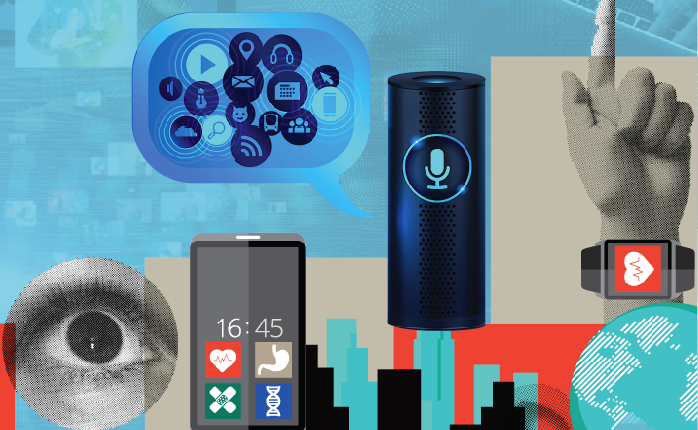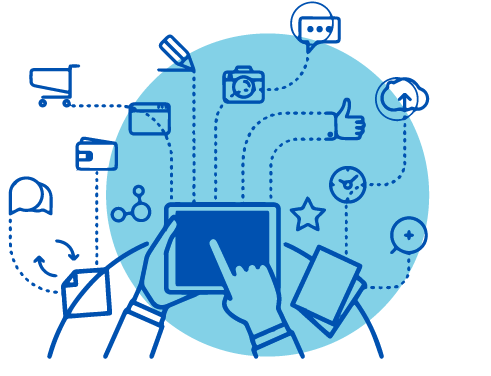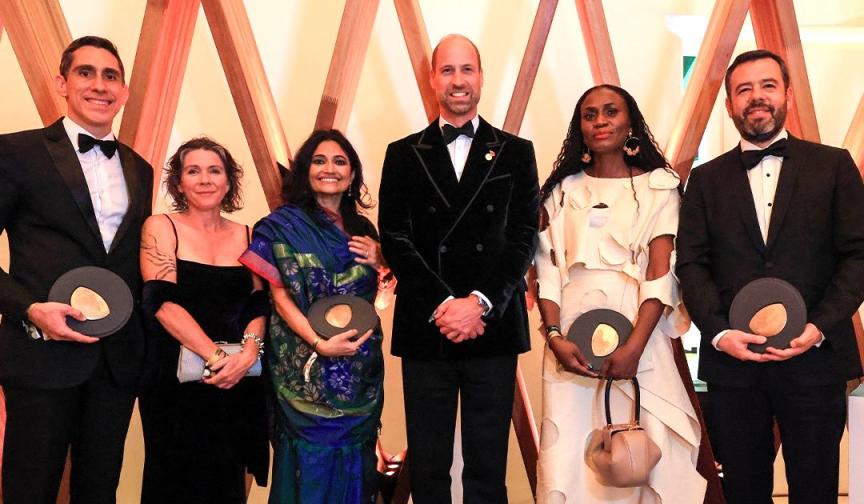A look into how technology is being utilised to understand consumer behaviour.
![]() oday’s marketing landscape has changed. Not only is there a paradigm shift in the consumer’s everyday lifestyle, but the way how these consumers are being reached has also undergone an intense transformation. Marketers are constantly seeking new avenues and touchpoints to reach out to their customers, solidify their brands and product offerings in the customers’ minds, and create better, more relevant and emotional connections with them. Technology, without a shadow of a doubt, is playing a major role. But there are multiple things that are slowly taking the art of promoting products and services in a new direction. Let’s see some of the major avenues which are reshaping marketing in this day and age.
oday’s marketing landscape has changed. Not only is there a paradigm shift in the consumer’s everyday lifestyle, but the way how these consumers are being reached has also undergone an intense transformation. Marketers are constantly seeking new avenues and touchpoints to reach out to their customers, solidify their brands and product offerings in the customers’ minds, and create better, more relevant and emotional connections with them. Technology, without a shadow of a doubt, is playing a major role. But there are multiple things that are slowly taking the art of promoting products and services in a new direction. Let’s see some of the major avenues which are reshaping marketing in this day and age.
WEARABLE TECHNOLOGIES
The wearable technology market was valued at around USD 115.8 billion in 2021 and is projected to reach USD 380.5 billion by 2028. Smartwatches are becoming increasingly popular, which is propelling market growth. The way people interact with technology is changing as a result of wearables, which is also affecting how digital marketers are targeting their audience. Like many other developing technologies, wearables are still in their infancy. Therefore, now is the ideal moment for marketers to start learning new strategies to bank on their growth.
The typical person checks their phone 85 times a day. While this may seem like a lot, users might still miss out on important notifications. A smartwatch can send out real-time notifications for emails, apps, and SMS messages, meaning consumers will be able to respond to notifications quicker and more frequently. This enables marketers to be more responsive and adaptable during campaigns. it also gives them quicker access to data, particularly if they track email open rates.
The younger generation is the main user of new technologies, as is typical. While several technologies are just passing trends that endure no longer than a year, many wearables will have a lasting impact on future consumers. The effects of wearable lifestyles will be seen everywhere as target markets and decision-making roles in the workplace alter. It will be necessary to analyse target markets to determine which wearables they use and how that affects their purchasing patterns. This is comparable to how marketers nowadays must consider the many sorts of smartphones and tablets that consumers use while looking for trends in their actions. Every wearable has the ability to give businesses and marketers fresh data. More data translates into more informed marketing choices and consumer behaviour insights. This may involve factors like geolocation, how users interact with apps and retailers, and more. Wearables will provide an additional point of contact for data collection for location- and relationship-based marketing, which is already very popular.
VOICE TECHNOLOGY
In contemporary homes, smart speakers are no longer uncommon. Studies show that the number of voice assistants surged by 78% between 2017 and 2018 and that growth has persisted. According to Statista’s forecast, there will be 135.6 million voice assistant users worldwide in 2022. Over the past several years, voice-activated smart goods have become more and more prevalent in our society and everyday lives. For us, scrolling, tapping, and clicking come naturally. However, since speaking is one of the most fundamental aspects of being a human, advertisers are eager to include voice in their approaches. That is now possible. A new metric called the say-through rate has been introduced (STR). Voice advertisements’ verbal engagement is measured by STRs, which is similar to measuring clickthrough rates in texts (CTR). As a result, advertisers may communicate with users and learn in real-time how interesting their material is.
But what role does voice search play? Voice is the most instinctive and natural way for us to communicate, and as a result, it greatly influences how people use technology. For large user groups like the differently abled and illiterate, it serves as an interface that makes it easier to utilise smart gadgets and access the internet. People can find your brand or business and take advantage of its goods or services if you give it a voice. That is the simplest way to sum up voice search’s current function. One real-world illustration is business. The total number of voice shoppers is increasing, even though the predicted numbers for smart speaker purchases have not yet materialised.
PROGRAMMATIC MARKETING
Simply put, programmatic digital marketing or programmatic advertising refers to a group of technology tools that make it possible to trade digital advertisements in real-time. Marketers may now concentrate on improving and targeting their ads rather than submitting several offers and spending hours negotiating. Digital ads are bought using machines and algorithms in programmatic advertising, freeing up human resources for planning and ad optimisation. Real-time bidding (RTB) algorithms used in programmatic marketing technologies automate the digital media trading process and contribute to higher earnings for both publishers and advertisers by offering them automated media selling/ad purchasing solutions. It was projected that by the end of 2021, programmatic will make up 86% of all digital display ad spending. The use of programmatic has been increasing gradually, and this trend doesn’t appear to be slowing down. Advertisers and publishers can both profit from programmatic marketing, which automates campaigns and allows for simultaneous advertising across all platforms, channels, and digital media (social media, CTV, mobile, in-app). Programmatic advertising is supplied automatically, which means that AI and ML, on behalf of advertisers, discover the best matching ad inventory and show ads in those locations that best meet campaign parameters.
You can aim for both domestic and foreign audiences. By utilising programmatic marketing, even small businesses may begin running worldwide advertising campaigns. Why? First of all, automation made advertising more affordable, making programmatic advertising available to everyone. Second, global ad impressions may be given with exact targeting (ad serving is adjusted to the timezones). Programmatic ads also offer advertisers the chance to simultaneously conduct ad campaigns through numerous digital marketing channels at the same time, unlike any other technology. The platform can serve advertisements uniformly across display, mobile web, in-app, and CTV ecosystems by using your campaign data. In 2021, global programmatic ad spending reached an estimated USD 418.4 billion, with spending set to surpass USD 493 billion by 2022. 
The United States remains the leading programmatic advertising market worldwide, but marketers from countries such as China and the UK are also embracing the benefits of programmatic buying. According to this report, the global programmatic advertising market was valued at USD 136.74 billion in the year 2021.
CUSTOMER DATA PROFILE
Data points are what most modern marketing today is based on. Modern marketing has swiftly grown to rely on an organisation’s capacity to gather, analyse, and utilise valuable customer data to inform their attempts to engage with customers. Second, clients increasingly interact with businesses simultaneously through a range of digital channels, both current and potential. These customers may connect with a firm website or marketing system, receive emails, and engage with the brand simultaneously on several social media sites.
Brands that are unable to comprehend how these many interactions affect one another and combine data from various sources in a single data management platform risk losing out on important details about their target audience. According to the Customer Data Platform (CDP) Institute, a customer data platform is a “packaged software that produces a persistent, unified customer database that is accessible to other systems.” Companies can combine consumer data from several platforms, such as mobile apps, emails, and the main company website into a single location with a CDP. This results in a consistent view of user activity. The CDP addresses the increased demand for integrated customer profiles in real time, producing a single customer perspective or a 360-degree picture as opposed to segmented or incomplete data gathered through other platforms.
WHILE SEVERAL TECHNOLOGIES ARE JUST PASSING TRENDS THAT ENDURE NO LONGER THAN A YEAR, MANY WEARABLES WILL HAVE A LASTING IMPACT ON FUTURE CONSUMERS.
The CDP places a strong emphasis on acquiring important consumer data for use across departments. The fundamental objective is to develop a comprehensive picture of the customer rather than to form conclusions. Everyone who needs data, from marketing to sales and customer service, can get it from the information. The silos between the various company departments are also broken down because everyone has access to a single data source. As firms search for the best ways to incorporate marketing technology into their operations, the marketing budget is now being devoted to this area. In order to fulfil their company goals and maintain their competitiveness in their respective industries, several successful firms are currently preparing to coordinate their investments in marketing technology. However, if you also intend to increase your investment in marketing technology, be careful to set up your company and its resources to quickly adapt to the aforementioned trends. It’s because maintaining an edge over your rivals is crucial.

















